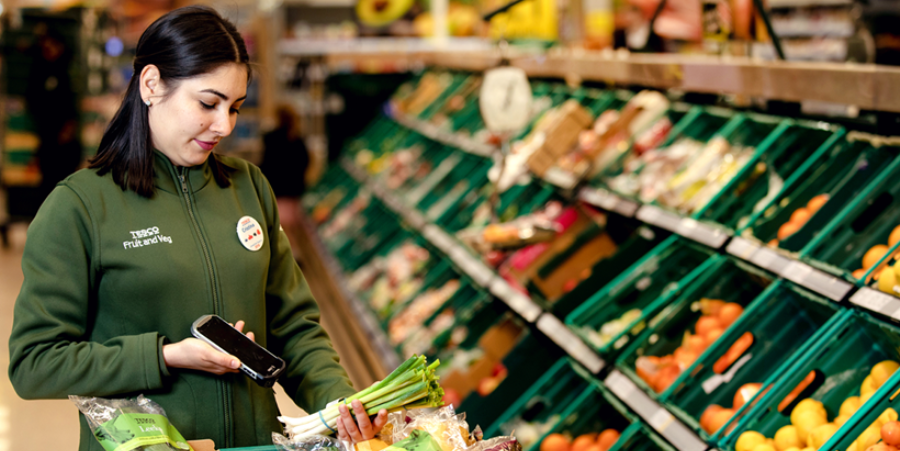“The case for reducing food waste is indisputable. One third of the world’s food is wasted whilst one in nine people go hungry. If food loss and waste were a country, it would be the third largest emitter of greenhouse gases on the planet. We cannot delay, we must act now,” is the message from Tesco CEO, Dave Lewis.
“A lot of food companies have pledged to tackle food waste, but without transparency will not be able to judge if they are delivering on their commitment. Publishing food waste data is vital and must be mandatory if the UK is to achieve SDG 12.3 to halve food waste by 2030. The Government has indicated it will introduce mandatory reporting and we call on them to do this urgently,” added Lewis.
The lack of data on progress towards reducing food waste is an obstacle to meeting the SDG 12.3 goal of halving food waste by 2030, according to a report published by Champions 12.3.
Champions 12.3 is a coalition of executives from governments, businesses, international organisations, research institutions, and civil society dedicated to accelerating progress toward achieving Sustainable Development Goal Target 12.3.
Champions offer three recommendations for leaders to achieve SDG Target 12.3 by 2030:
- Target: Every country, major city and company involved in the food supply chain should endorse and adopt SDG Target 12.3.
- Measure: Governments and companies should quantify their food loss and waste and publicly report this information.
- Act: Based on the insights from measurement, governments and companies should innovate and scale up adoption of policies and practices that reduce food loss and waste.
Sustainable Development Goal 12.3 aims to: By 2030, halve per capita global food waste at the retail and consumer levels and reduce food losses along production and supply chains, including post-harvest losses.
- The moral, environmental and economic costs of global food waste and loss are significant.
- According to the Food and Agriculture Organization, one-third of all food intended for human consumption is lost or wasted between the farm and the fork.
- Food loss and waste results in roughly US$940 billion in economic losses globally per year (FAO 2015).
- Food wasted or lost accounts for an estimated 8% of all greenhouse gas emissions per year.
- If food waste were a country, it would be the third biggest emitter of greenhouse gas emissions after China and the United States.
Building on the growing commitment in the UK, the Champions 12.3 coalition has a series of measures to help quicken the pace of progress in reducing food waste globally:
- The World Bank will announce a landmark $1 billion “SDG Bond” dedicated to tackling food loss and waste in developing countries
- The 10x20x30 initiative will see some of the world’s largest food retailers and providers come together to each work with 20 of their priority suppliers, to halve their rates of food loss and waste
- The Sustainable Rice Platform, a coalition comprised of some of the biggest rice producers in the world, will commit to halving rates of on-farm and near-farm rice losses among members by 2030, following the Target-Measure-Act approach.
In the UK, 156 of the largest food companies have committed to reduce food waste, but less than a third are publishing their annual food waste data.
Tesco was the first UK retailer to publish food waste data in 2013 and will publish for the seventh year and announce:
- 27 own brand suppliers, accounting for more than 50% of Tesco’s fresh food sales, published food waste data for the second year running;
- 11 branded suppliers have published their food waste data, nine for the first time;
- Tesco Lotus and Malaysia have published data for the first time. This completes Tesco’s Group-wide reporting, following the publication of data for Tesco UK, Republic of Ireland and Central Europe.
- 12 own brand suppliers from the Republic of Ireland, representing over one third of fresh food sales, and 14 global growers have committed to publish data in 12 months.
Since last year, Tesco has halved the amount food safe for human consumption going to waste and today it represents just 0.1% of food sales. To help reduce food waste, Tesco says it has:
- Donated over 77 million meals from surplus food to local charities
- Rolled out colleague shops to all stores where staff can take surplus food
- Redistributed suitable food for animal feed
- Scrapped best before dates on 180 fruit and veg to help customers reduce waste at home
- Worked with suppliers to help with crop flushes or ‘perfectly imperfect’ produce
- It has also announced a new partnership with Flamingo, a global supplier of fresh produce, to support a food waste redistribution programme in Kenya that will see surplus food from pack houses made into soup to feed 5,000 schoolchildren.
Of the world’s 50 largest food companies, over two-thirds have set targets in line with SDG 12.3, more than 40 percent are measuring their food loss and waste, and just one-third are pursuing actions at scale to reduce waste in their own operations. Businesses need to increase efforts to engage their suppliers and increase public reporting of their food loss and waste inventories.
Take a look at the details of Tesco’s Own Branded and Branded suppliers’ food waste data.









